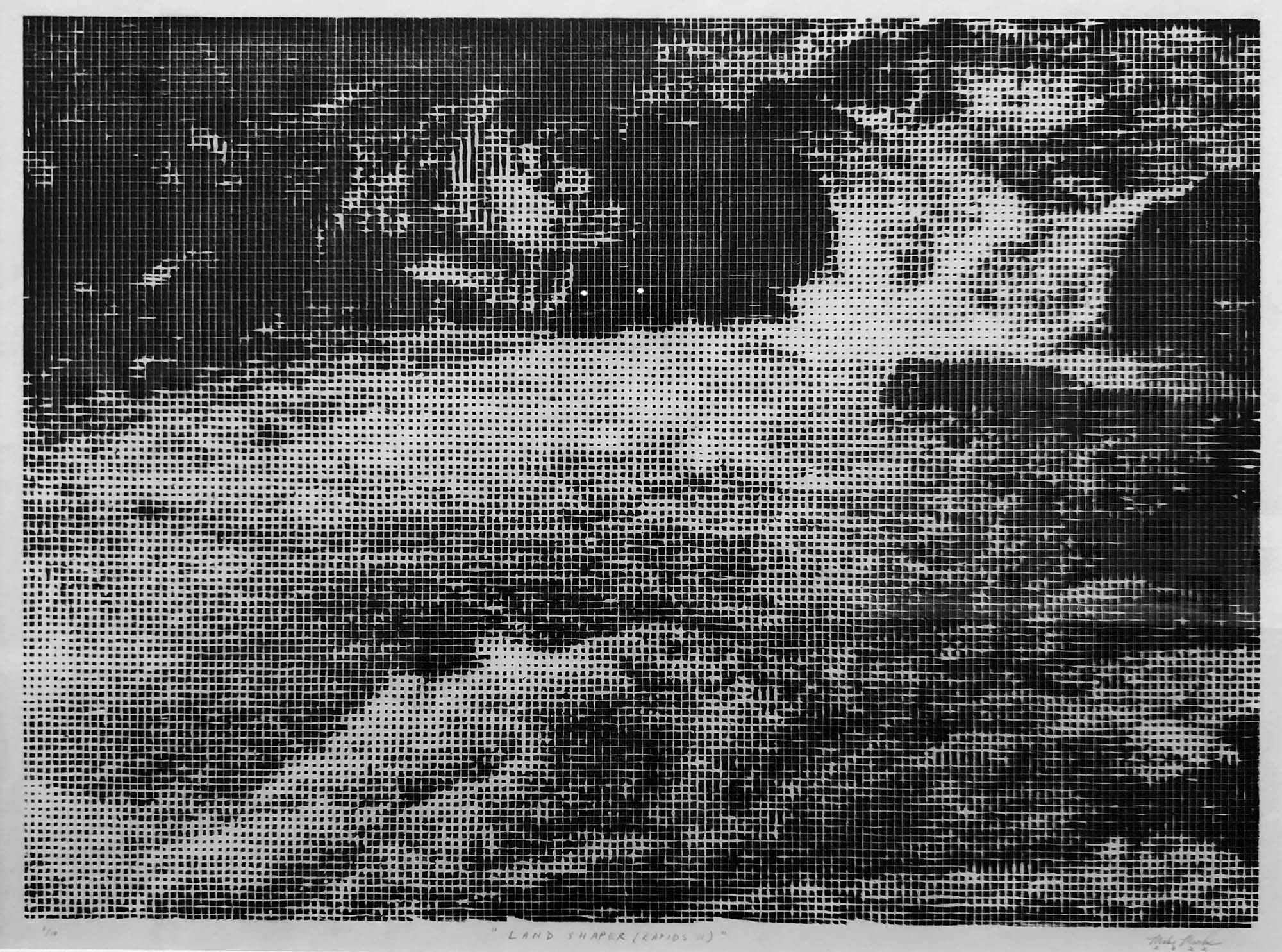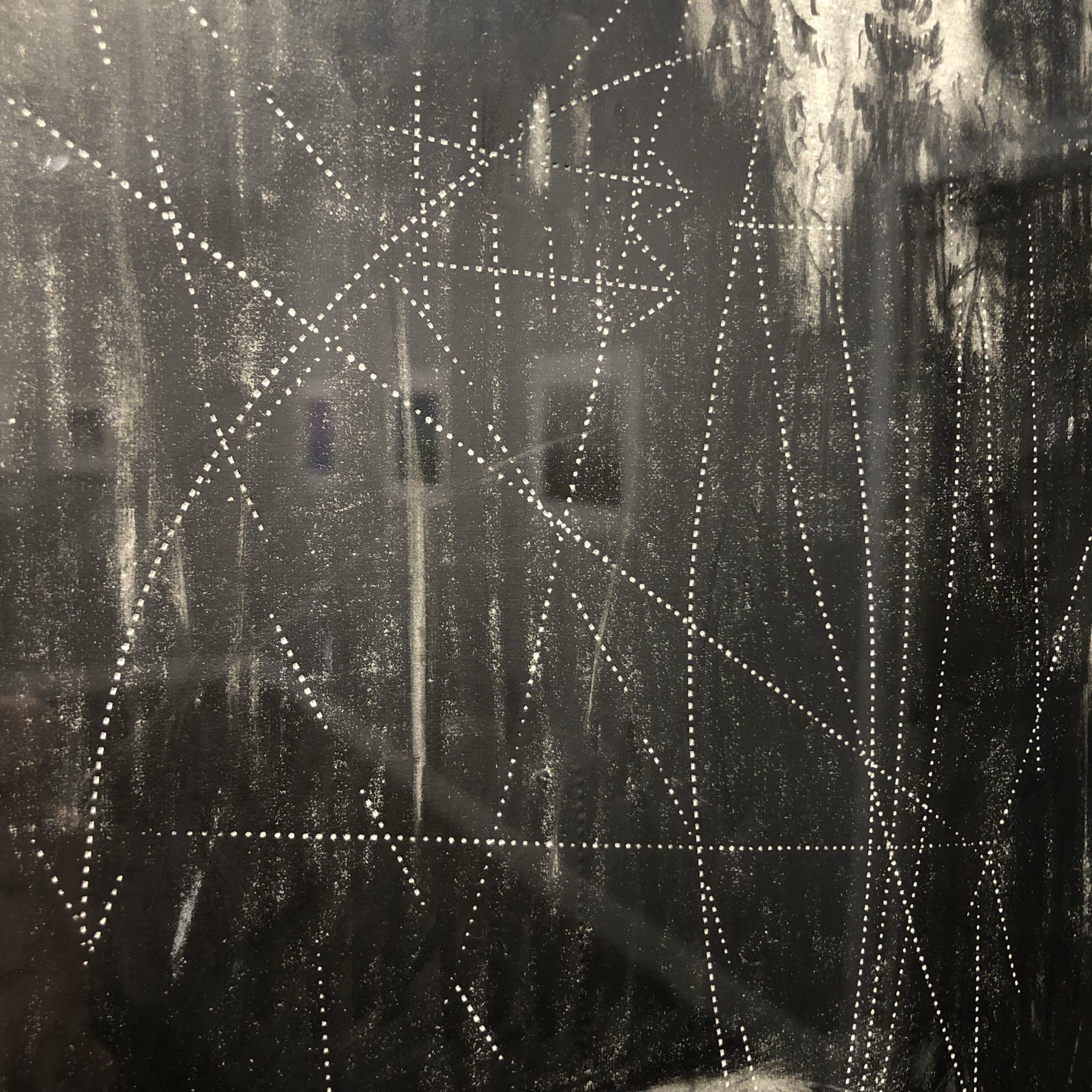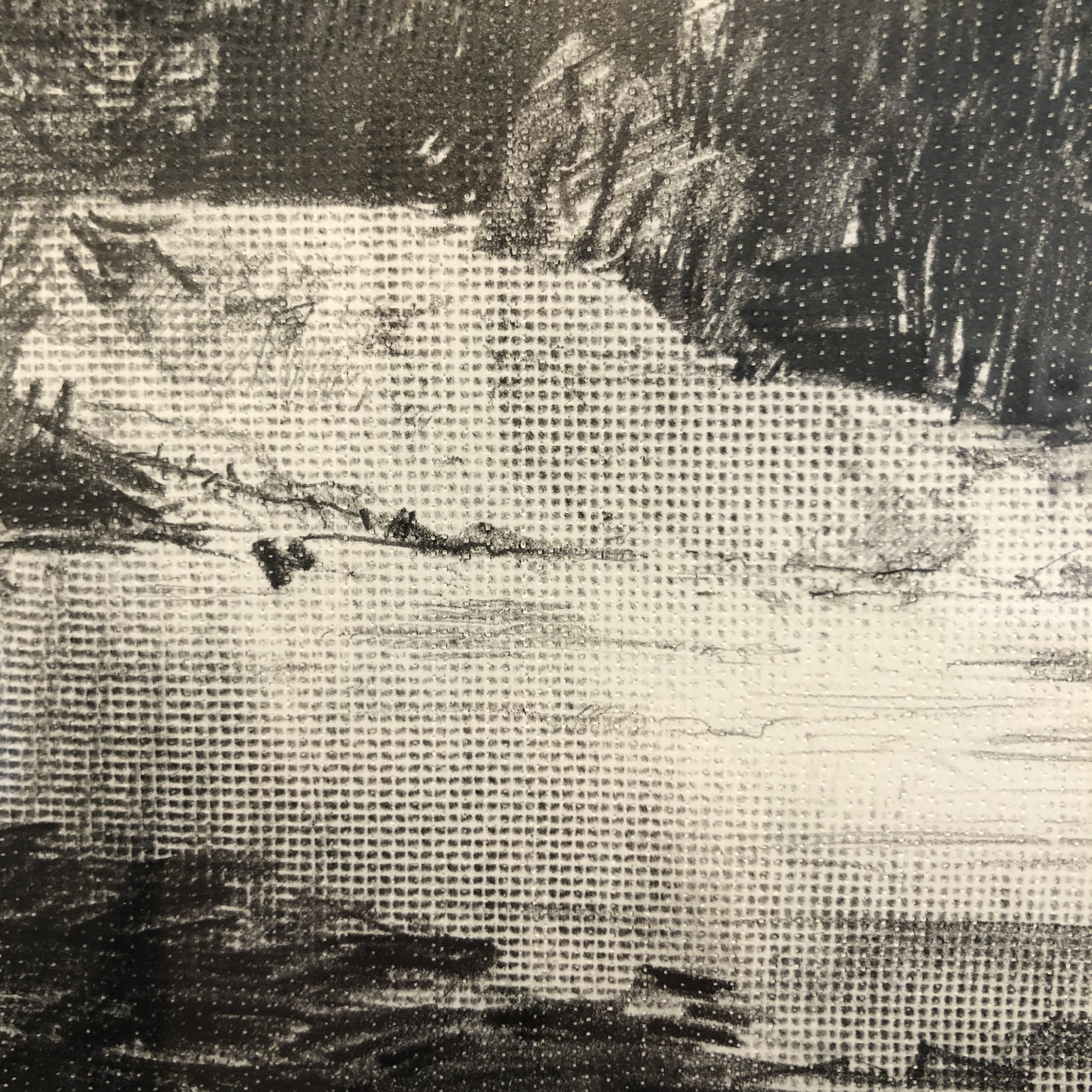In this short conversation reflecting on the exhibition, HERE BEFORE – Woodcuts and Drawings by Mike Marks, Shirin Ghoraishi and Ellen Mueller pose questions for one another after viewing Mike Marks‘ work. This show runs September 16 – October 22, 2022 at Burnet Fine Art & Advisory, 775 Lake St E, Wayzata, MN 55391.
For all reviews, there is an accompanying printed zine.

Fast Water Moving Still [detail] (2022) woodcut on paper, edition of 8
SG: I’ve always been drawn to the concept of memory and space, preservation of an experience. The combination of printmaking and digital representations of nature is initially what I was drawn to. But beyond that as an audience I look for a personal connection and how I am immersed in a work of art. What I search for in a work of art is to comfort me, challenge me or educate me. I find comfort in the fog and hazinees aesthetic of Mike Marks. The grayishness of his work conveys sinking in a faded memory that is emerging, soon to be remembered. The landscapes can be anywhere and anytime or for me I just made a connection to an invented memory from my imagination as a child daydreaming in a class.

The Endless Glowing Hours (Green) (2022) woodcut on paper, edition of 10
SG: What was the first thing you noticed about his work?And do you know why you noticed that?
EM: The first thing I noticed were the repeated mark-making elements, almost like the artist was developing an alphabet for a visual language. I saw the perforations, the wood cut grids acting as a type of halftone pattern, the gestural graphite designating vegetation, and areas with powdered material.

Landshaper Rapids II (2022) woodcut on Kozo paper, edition of 10
EM: Were there any stand-out or favorite works in the exhibition for you? And if yes, which ones and why?
SG: Yes, My favourite is Land Shaper (Rapids II). It Stand-out to me as a mystery that I had to step back and get away from to see the picture and for it to reveal itself. A form of engagement and a sense of control that I felt more with this artwork.

Stream Drop [detail] (2022) graphite and perforations on paper
EM: I spent a lot of time thinking about air or atmosphere or wind, and it was because of the perforation lines made of dots that either remained visibly white in fields of darkness, or caught dark pigment as they scattered across white negative spaces. While sometimes they created recognizable shapes (arrows, etc.), I was most intrigued by areas where the perforations simply provided texture, such as where there were repeated vertical marks made by the tool.

River Glare [detail] (2022) graphite, colored pencil, and perforations on paper
SG: While making this body of work did he get any result he did not intend for, if so what was it?

Icy Flow [detail] (2022) graphite, gouache, ink, and perforations on paper
EM: A week later, the idea of landscape sticks with me the most, likely because I think a lot about landscape in general, and in connection to issues of climate change and habitat loss.
Disclosure: I know Shirin Ghoraishi from when I was directing the MFA program at MCAD; she was a 2020 graduate.